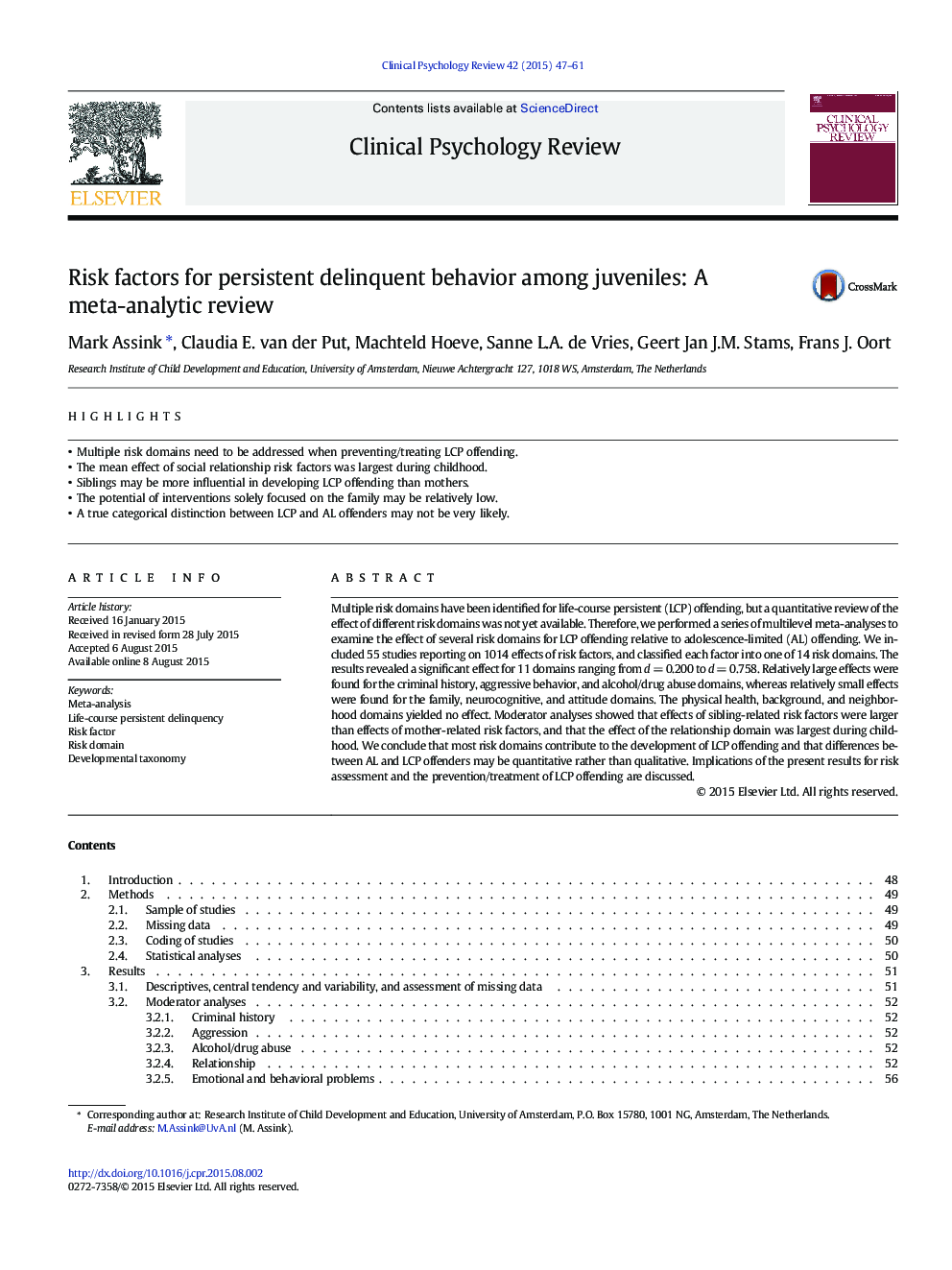| Article ID | Journal | Published Year | Pages | File Type |
|---|---|---|---|---|
| 7263953 | Clinical Psychology Review | 2015 | 15 Pages |
Abstract
Multiple risk domains have been identified for life-course persistent (LCP) offending, but a quantitative review of the effect of different risk domains was not yet available. Therefore, we performed a series of multilevel meta-analyses to examine the effect of several risk domains for LCP offending relative to adolescence-limited (AL) offending. We included 55 studies reporting on 1014 effects of risk factors, and classified each factor into one of 14 risk domains. The results revealed a significant effect for 11 domains ranging from d = 0.200 to d = 0.758. Relatively large effects were found for the criminal history, aggressive behavior, and alcohol/drug abuse domains, whereas relatively small effects were found for the family, neurocognitive, and attitude domains. The physical health, background, and neighborhood domains yielded no effect. Moderator analyses showed that effects of sibling-related risk factors were larger than effects of mother-related risk factors, and that the effect of the relationship domain was largest during childhood. We conclude that most risk domains contribute to the development of LCP offending and that differences between AL and LCP offenders may be quantitative rather than qualitative. Implications of the present results for risk assessment and the prevention/treatment of LCP offending are discussed.
Keywords
Related Topics
Health Sciences
Medicine and Dentistry
Psychiatry and Mental Health
Authors
Mark Assink, Claudia E. van der Put, Machteld Hoeve, Sanne L.A. de Vries, Geert Jan J.M. Stams, Frans J. Oort,
